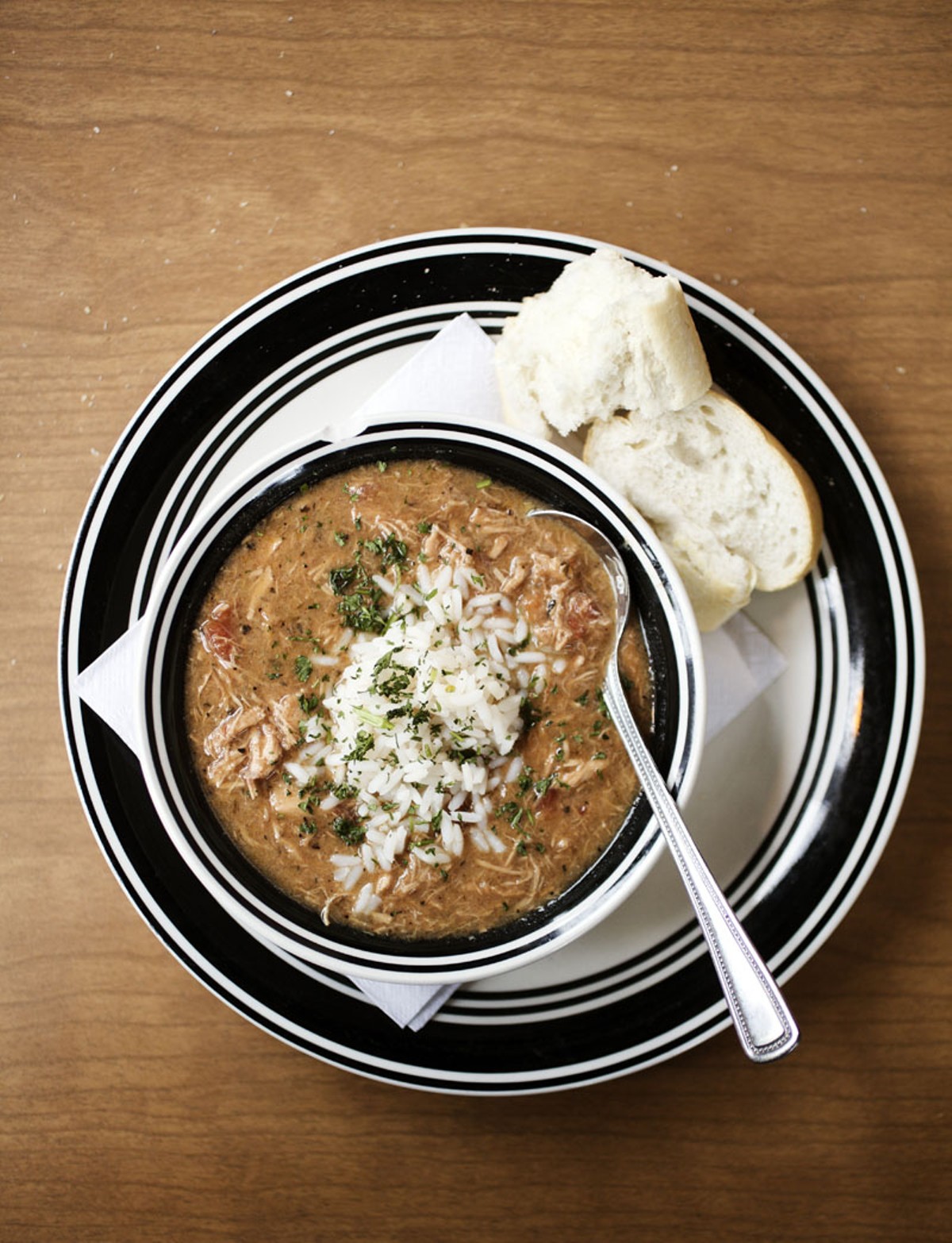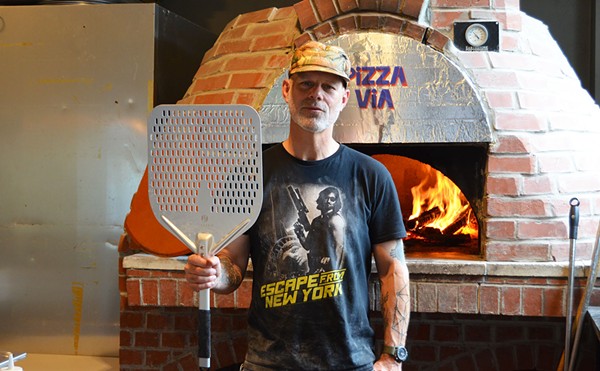If you need confirmation that Riverbend Restaurant & Bar is a real-deal Creole joint, simply speak with owner Sam Kogos. You don't even have to ask him about his restaurant. You can hear New Orleans in his voice, that inviting Southern drawl. You can taste it in Riverbend's food.
Kogos is a New Orleans native who owned a restaurant there, the Rendon Inn, from 1985 to 2000. His wife, Pat, hails from St. Louis, and in 2004, they relocated here. Pat wanted to be closer to her family.
"You know how those St. Louis girls are," he says, laughing.
After moving to St. Louis, Kogos worked in the insurance business for a few years before opening Riverbend last fall at the corner of Utah and South Seventh streets in Soulard. It is a modest space, a typical neighborhood tavern, wood-paneled and dimly lit. There is a bar and maybe a dozen tables for dining. You can play keno, if you like.
At first, Riverbend was a bar only. The kitchen needed a thorough renovation, and Kogos was still awaiting the arrival of his go-to chef (and first cousin), Steve Daney. Daney had worked for Kogos at the Rendon Inn; he'd also served for six years as the executive chef of New Orleans mayor Marc Morial. Finally, in April this year, with Daney behind the stove, Riverbend started serving food.
The menu features mainly Creole cuisine, with the occasional Cajun interloper. The difference between the two is a frequent topic of conversation for Kogos and customers: "I try to explain that Cajun is more a southwestern Louisiana type of thing, Creole more a New Orleans cuisine."
(Then again, the meaning of "Creole" is contentious. Though it originally referred to those of mixed French and Spanish descent, as Kogos explains, "If you grew up in New Orleans your whole life, Creole has come to be known as a mix of black and white.")
For a lesson in the differences as well as the similarities and even overlap between the two, consider two of Riverbend's entrées: crawfish étouffée and crawfish Creole, each served in a shallow bowl around a scoop of white rice. (Both are available with shrimp instead of crawfish.) The crawfish étouffée features the traditional Cajun combination of a dark roux and the "holy trinity" of celery, bell pepper and onion. It has a tremendous depth of flavor, slightly nutty and mildly piquant, and a thick, rich texture. The Creole sauce is more roughly hewn, with chunks of tomato, onion and bell pepper, and a gentle, but definite, heat.
Choosing my favorite is impossible: I preferred the body of the étouffée, but the spice of the Creole. At any rate, in both cases the crawfish were terrific, buttery sweet and cooked until just done and not any longer.
The étouffée and Creole are two of only three "entrées" on the relatively brief menu. There are several sandwiches, including po' boys, of course, as well as soups and a couple of salads. There are also specials, like jambalaya with chicken and smoked sausage. This relies on the same sauce as the crawfish Creole, though in this case the rice is cooked in the sauce and thus soaks up much of it, resulting in a dish so thick that, aside from its pungent flavor, bears hardly any trace of its cooking liquid. The restaurant's gumbo (also with chicken and sausage) isn't quite so thick, and the flavor is somewhat lighter, but it is still a hearty, flavorful dish.
As is traditional in New Orleans, red beans and rice is available only on Mondays. (So says the menu, at least, though I had it as a special on a Wednesday.) It is worth planning a visit around its availability: The sauce itself has a rich, porky flavor, while smoked sausage adds brightness and spice. The beans are perfectly al dente. As with most of the dishes here, there is (intentionally) only a whisper of heat, but both Tabasco and Crystal hot sauces are available, and the menu explicitly states, "if the chef catches you shaking hot sauce onto one of his creations, he will not be offended."
The po' boy sandwiches are big enough to share, though you won't want to. The standout is the cochon de lait, piled high with quarter-inch slices of tender roasted pork. The meat is so flavorful that the accompanying Creole-seasoned mayo (not to mention the optional lettuce, tomato and pickle) seems superfluous. The roast-beef po' boy brings an equally impressive stack of meat, its natural flavor amplified by a brown gravy nearly as dense as fresh cream.
Surprisingly, Riverbend doesn't offer a shrimp or oyster po' boy. This is a fault of the restaurant's kitchen, as Kogos explains. For the deep fryer that such po' boys would require, the fire code mandates a more elaborate and, thus, more expensive venting hood than the restaurant can currently support. Kogos hopes to change this in the future. In the near term — as soon as Daney returns from a temporary cooking gig in Germany, in fact — Kogos plans to expand the menu.
For those who can't wait that long for their New Orleans oyster fix, Riverbend offers two oyster dishes as appetizers: "Doc Sewall Oysters," which are oysters baked with breadcrumbs and cheese, and the intriguing "oyster bread." This looks something like cheese bread, a crusty baguette halved lengthwise and topped with an oyster spread. It is ridiculously tasty, a touch sweet, a touch salty.
There are exactly two desserts: chocolate cake and Creole bread pudding. The latter is Pat Kogos' recipe, the dense, soft bread studded with golden raisins and topped with a whiskey-cream sauce. It is another thing for which we must thank her — after, of course, convincing her husband to move here.






